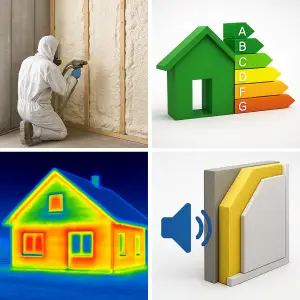Understanding Part G of the Building Regulations
Water calculations is Part G of the Building Regulations, titled “Sanitation, hot water safety, and water efficiency,” sets out the requirements for water usage, sanitation facilities, and water efficiency in buildings. Its primary goals are to ensure the safe and efficient use of water within buildings while minimizing wastage. Part G applies to both residential and commercial properties and plays a crucial role in promoting sustainable construction practices.
Water Efficiency Calculations
One of the central elements of Part G is water efficiency. Building designers and developers must calculate and demonstrate that the proposed building meets specific water efficiency targets. These targets are expressed in litres per person per day (l/p/d) and vary depending on the type of building and its intended use.
Calculating water efficiency involves assessing the water demand for various fixtures and appliances within the building. This includes toilets, showers, baths, taps, and washing machines. The calculations take into account the flow rates, usage patterns, and the number of occupants or users. The goal is to design buildings that minimize water consumption without compromising user comfort.
Sanitary Facilities and Drainage Calculations
Part G also mandates the provision of adequate sanitary facilities and proper drainage systems. Water calculations here involve determining the correct sizing and capacity of wastewater pipes, drains, and sewers to ensure the safe and efficient removal of sewage and wastewater from the building. These calculations consider factors like fixture flow rates, pipe gradients, and drainage capacity.

Hot Water Safety
Hot water safety is another critical aspect addressed by Part G. The regulations require the prevention of scalding and overheating of water from taps and showers. Calculations related to hot water safety may involve specifying the maximum allowable water temperature at outlets and the installation of thermostatic mixing valves to ensure safe hot water delivery.
Rainwater Harvesting and Greywater Recycling
Part G encourages sustainable water management practices, such as rainwater harvesting and greywater recycling. These systems involve collecting rainwater for non-potable uses like toilet flushing or irrigation and recycling greywater (wastewater from baths, showers, and sinks) for similar purposes. Calculations in this context may include estimating the volume of rainwater that can be collected and the potential water savings achieved through greywater recycling.
Professionals in Water Calculations for Building Regulations
When it comes to complying with Part G of the Building Regulations and ensuring water calculations are accurate and efficient, consulting with experts is invaluable. Ratio Seven, a UK-based company specializing in water resource management, offers services tailored to meet the requirements of Part G.
Services Offered by Ratio Seven:
- Water Efficiency Audits: Ratio Seven conducts comprehensive water efficiency audits for buildings to assess compliance with Part G and recommends measures for improvement.
- Sanitary Facilities Design: The company provides expertise in the design of sanitary facilities and drainage systems that meet regulatory standards.
- Hot Water Safety Solutions: Ratio Seven assists in ensuring hot water safety compliance, including the installation of thermostatic mixing valves.
- Rainwater Harvesting and Greywater Recycling: Ratio Seven can design and install rainwater harvesting and greywater recycling systems to enhance sustainability.
In conclusion, water calculations are a critical aspect of Part G of the Building Regulations. Compliance with water efficiency targets, sanitary facility design, hot water safety, and sustainable practices is essential for responsible and sustainable construction.
Ratio Seven’s services play a pivotal role in helping builders and property owners navigate these regulations and meet their water efficiency and safety goals, ensuring that buildings are not only compliant but also environmentally responsible.




